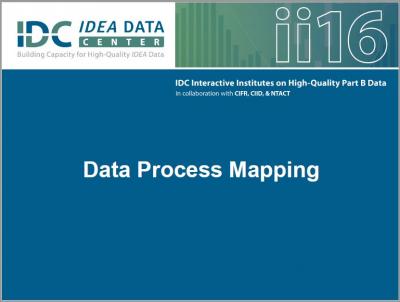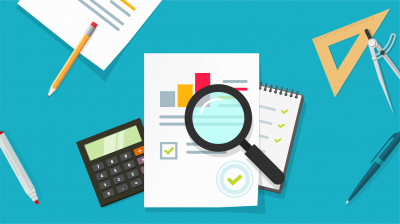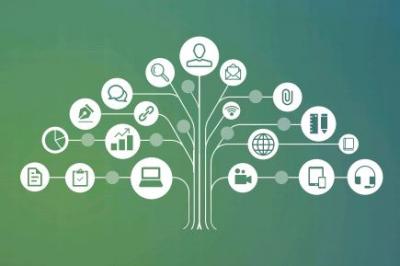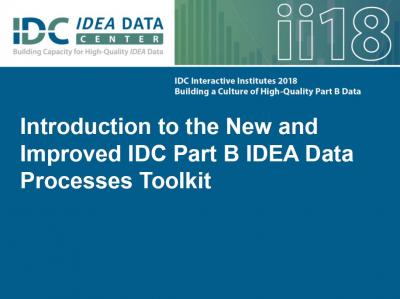Site Search
Results 1 - 7 of 7
Format: Guides and Briefs
IDEA Section 618 Public Reporting Data Element Checklist – Part BThis interactive checklist helps states meet IDEA Section 618 public reporting requirements. The checklist also has an archiving function to document the posting process for later reference.
Format: Presentations
Data Process MappingDo you ever wonder what other states are doing to ensure high-quality data? Participants of this session learned about the work that the Kentucky Department of Education is undertaking to create data process protocols, build capacity of data stewards, and institute a culture of high-quality data. This work is being accomplished using the new IDC Data Processes Toolkit. Presenters provided an overview of the toolkit, and participants had an opportunity to experience “preparing for this work.”
Format: Toolkits
SEA Data Processes ToolkitUsing the SEA Data Processes Toolkit to document data processes for all 616 and 618 data collections will establish a well-managed process for data collection, validation, and submission. In collaboration with IDC State Liaisons, states can use the toolkit to create and maintain a culture of high-quality data and establish and support consistent practices that produce valid and reliable data, while building the capacity of state staff.
Format: Toolkits and Templates
Part C IDEA Data Processes ToolkitUsing the Part C IDEA Data Processes Toolkit to document data processes for all 616 and 618 data collections will establish a well-managed process for data collection, validation, and submission. In collaboration with IDC State Liaisons, states can use the toolkit to create and maintain a culture of high-quality data and establish and support consistent practices that produce valid and reliable data, while building the capacity of state staff. The toolkit contains an overview of the toolkit, Data Collection Protocols, SPP/APR Indicator Protocols, a State Landscape Protocol, a Local EI Program Determinations Protocol, a Data Collections Calendar, and additional resources that provide a structure for documenting data processes. The Data Collection Protocols are in Word, and states can tailor them meet their states' specific documentation needs.
Format: Presentations
Introduction to the New and Improved IDC Part B IDEA Data Processes ToolkitThis workshop provided a brief overview of the new IDC IDEA Part B 616 Data Processes Toolkit. Several states that have piloted the toolkit shared their experiences with creating data processes for the SPP/APR indicators, building capacity of data stewards, and instilling a culture of high-quality data. Presenters facilitated discussion that helped participants understand the value of data processes documentation and afforded them an opportunity to experience preparing for and beginning this work.
Format: Presentations
Taking Data Processes Documentation to the Next LevelThis workshop provided participants an opportunity to envision and begin development of a comprehensive plan for creating protocols and follow-up activities they may use at both the SEA and LEA levels. Session activities focused on identifying appropriate roles to be represented at the table. They also focused on methods for engaging staff in the work and other critical considerations for implementing and sustaining these foundational data practices.
Format: Applications and Spreadsheets
Interactive Public Reporting EngineThe Interactive Public Reporting Engine displays the complete set of IDEA data that states collect and submit to OSEP to meet the requirements of Section 618 of IDEA. This tool displays each dataset and the required disaggregations such as race/ethnicity, gender, and age. It provides a more dynamic way for states to meet the 618 public reporting requirements, and linking to the tool fulfills the public reporting requirements. In addition, use of the tool promotes conversations about how to improve results among families, teachers, schools, related service providers, administrators, policymakers, and other interested stakeholders.








